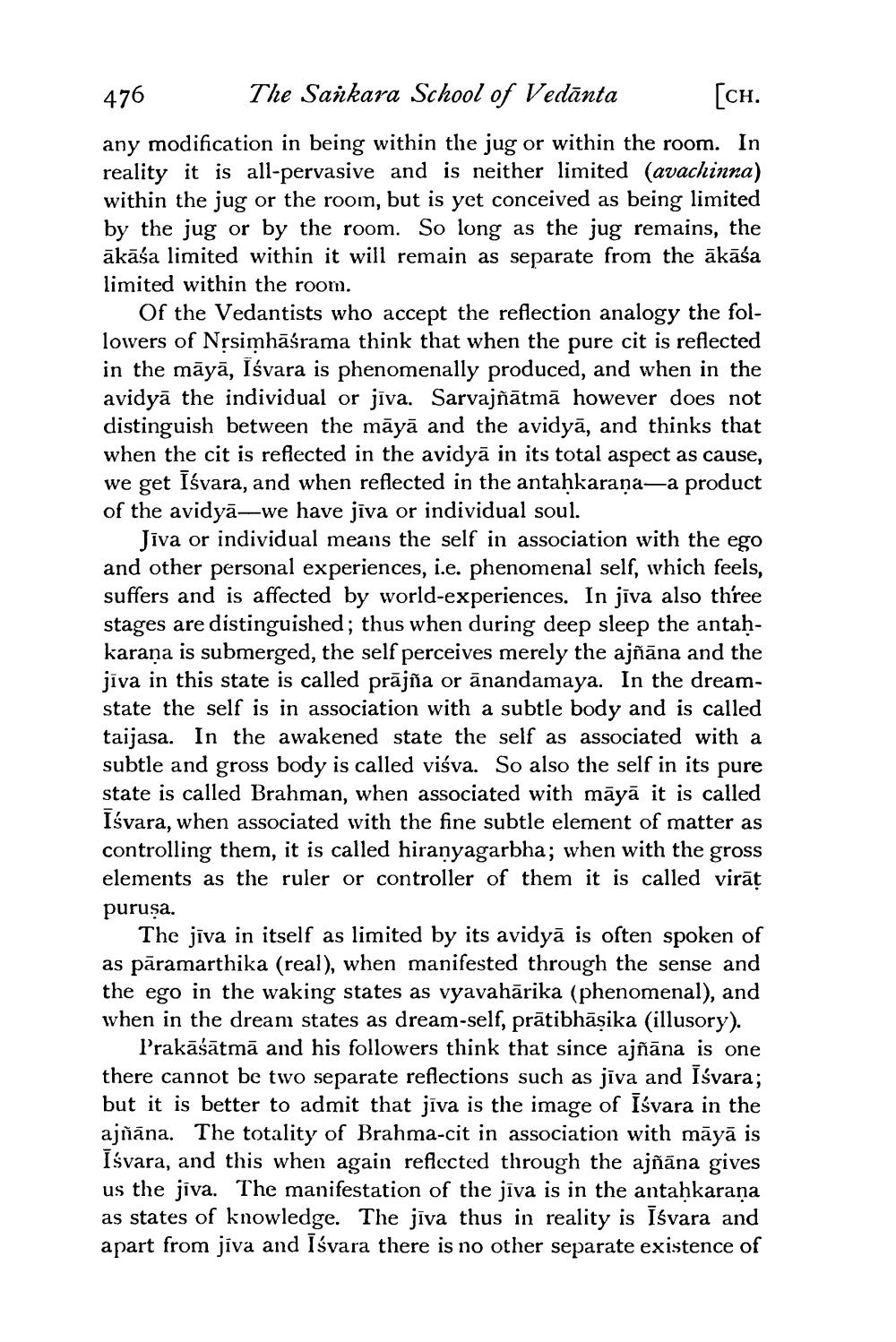________________
476
The Sankara School of Vedānta
[ch.
any modification in being within the jug or within the room. In reality it is all-pervasive and is neither limited (avachinna) within the jug or the room, but is yet conceived as being limited by the jug or by the room. So long as the jug remains, the ākāśa limited within it will remain as separate from the ākāśa limited within the room.
Of the Vedantists who accept the reflection analogy the followers of Nrsimhāśrama think that when the pure cit is reflected in the māyā, Iśvara is phenomenally produced, and when in the avidyā the individual or jīva. Sarvajñātmā however does not distinguish between the māyā and the avidyā, and thinks that when the cit is reflected in the avidyā in its total aspect as cause, we get īśvara, and when reflected in the antahkarana—a product of the avidyā—we have jīva or individual soul.
Jiva or individual means the self in association with the ego and other personal experiences, i.e. phenomenal self, which feels, suffers and is affected by world-experiences. In jīva also three stages are distinguished; thus when during deep sleep the antaḥkarana is submerged, the self perceives merely the ajñāna and the jiva in this state is called prājña or ānandamaya. In the dreamstate the self is in association with a subtle body and is called taijasa. In the awakened state the self as associated with a subtle and gross body is called viśva. So also the self in its pure state is called Brahman, when associated with māyā it is called īśvara, when associated with the fine subtle element of matter as controlling them, it is called hiranyagarbha; when with the gross elements as the ruler or controller of them it is called virāt purusa.
The jīva in itself as limited by its avidyā is often spoken of as pāramarthika (real), when manifested through the sense and the ego in the waking states as vyavahārika (phenomenal), and when in the dream states as dream-self, prātibhāṣika (illusory).
Prakāśātmā and his followers think that since ajñāna is one there cannot be two separate reflections such as jīva and Iśvara; but it is better to admit that jīva is the image of īśvara in the ajñāna. The totality of Brahma-cit in association with māyā is īśvara, and this when again reflected through the ajñāna gives us the jiva. The manifestation of the jīva is in the antahkarana as states of knowledge. The jīva thus in reality is īśvara and apart from jiva and īśvara there is no other separate existence of




